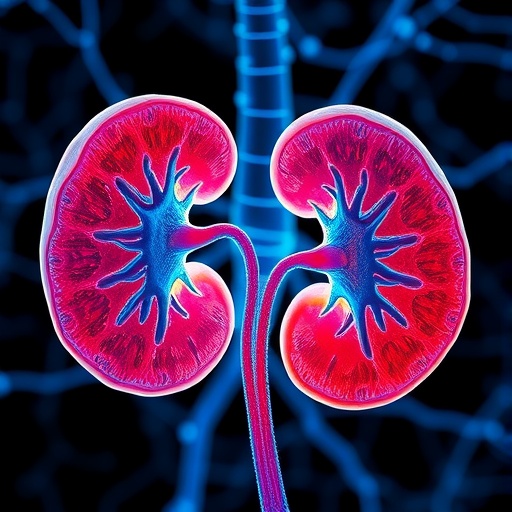PROTECT YOUR DNA WITH QUANTUM TECHNOLOGY
Orgo-Life the new way to the future Advertising by AdpathwayIn the realm of advanced electronic devices, the challenge of managing heat dissipation is paramount for ensuring longevity and performance. As technology continues to advance, the miniaturization of electronics has led to the generation of increasingly high heat fluxes, which pose a significant threat to device integrity. It is essential that these systems maintain effective thermal management solutions to avoid degradation or ultimate failure. In a recent groundbreaking study, researchers have demonstrated a novel microfluidic cooling strategy that significantly outperforms existing methods, allowing heat dissipation up to an impressive 3,000 W cm−2 using single-phase water.
Traditionally, embedded microfluidic systems have been constrained by operational limits of around 2,000 W cm−2, creating a gap in cooling capabilities for high-performance applications. However, this new approach not only bridges that gap but also establishes a new standard for microfluidic cooling technology, achieving considerable heat flux performance with surprisingly low pumping power requirements. The researchers utilized an innovatively designed three-tiered structure that integrates various microfluidic components to enhance cooling efficiency, thus pushing the boundaries of what’s currently possible in thermal management for electronics.
The design of this cooling system involves a tapered manifold layer positioned at the top, which serves as an initial coolant channel that directs the flow of water into the subsequent layers. Below this is a microjet layer, critical for creating directed jets of coolant that dramatically enhance the heat transfer capabilities throughout the system. The intricate engineering continues with a microchannel layer featuring sawtooth-shaped sidewalls, which further maximizes the surface area contact between the coolant and the heated surfaces, augmenting heat dissipation.
What makes this development particularly remarkable is the achievement of this intense heat flux with a minimal pumping power requirement of merely 0.9 W cm−2. This efficiency is essential for practical applications, as it minimizes energy consumption and wear on the cooling system components. Moreover, the system has been shown to maintain a low thermal resistance, allowing it to effectively manage elevated temperatures without risking overheating or failure.
The researchers employed established microelectromechanical system (MEMS) technology to fabricate these structures directly on the silicon substrate, which allows for precise control over the geometrical features essential for optimal performance. The integration of these advanced structures into silicon wafers paves the way for easy scaling and integration into existing electronic devices, facilitating their adoption across a wide range of applications from consumer electronics to high-performance computing systems.
Furthermore, the coefficient of performance (COP) for this cooling system reaches an astonishing value of 13,000, showcasing the potential for extreme thermal management with remarkable efficiency. The system can sustain a significant heat flux of 1,000 W cm−2, all while maintaining a maximum chip temperature rise of just 65 K. Such impressive thermal performance not only extends the operational lifespan of electronic components but also enhances overall device performance by minimizing thermal-induced limitations.
The implications of this research extend beyond simply cooling electronic devices. As electronics continue to become more compact and powerful, developers and engineers will need innovative solutions to combat the ever-present threat of overheating. This microfluidic cooling strategy may very well reshape the landscape of thermal management technologies and serve as a benchmark for future research in the field.
In practical terms, this cooling solution offers a compelling alternative for the design of next-generation electronic devices, particularly those that demand high thermal management capabilities. The construction and optimization of the proposed microfluidic cooling system create opportunities for widespread applicability in various technological sectors, from telecommunications to artificial intelligence, and even in renewable energy systems where efficient thermal management is crucial.
As we look ahead to a future driven by technology, the continuous need for improved heat dissipation methods will remain critical. The unveiling of this microfluidic cooling strategy not only highlights the ingenuity of its developers but also sets the stage for significant advancements in how electronic devices are designed and cooled. Researchers and engineers now have a powerful new tool at their disposal, which could lead to transformative changes in electronic device markets and usage paradigms.
This breakthrough is a call to action for the scientific community, emphasizing the importance of continued innovation in thermal management solutions. The pioneering work in microfluidic cooling reflects the collaborative efforts of researchers fully committed to elevating technology and ensuring that devices can operate effectively in demanding environments. The promise of high-performance cooling techniques will undoubtedly spark further research endeavors aimed at tackling the challenges of modern electronics.
With an eye toward the future, perpetual advancements in cooling technologies will remain a priority as we venture deeper into an era dominated by high-performance electronics. The integration of sophisticated cooling mechanisms will be paramount for sustaining performance, reliability, and the evolution of smarter, more efficient electronic systems. As this research sets the precedent, it challenges future researchers to dream bigger, aiming even higher in the quest for effective thermal management solutions.
In conclusion, the recent development of advanced microfluidic cooling strategies emphasizes the critical balance between technological innovation and the practical needs of high-performance electronic systems. This achievement stands as a testament to what can be accomplished when teams of dedicated researchers and engineers collaborate towards a common goal. Their work is not only shaping the future of electronic device design but also paving the way for even bolder innovations that we can expect to see in the years to come.
Subject of Research: Microfluidic cooling strategies for electronics.
Article Title: Jet-enhanced manifold microchannels for cooling electronics up to a heat flux of 3,000 W cm−2.
Article References:
Wu, Z., Xiao, W., He, H. et al. Jet-enhanced manifold microchannels for cooling electronics up to a heat flux of 3,000 W cm−2.
Nat Electron 8, 810–817 (2025). https://doi.org/10.1038/s41928-025-01449-4
Image Credits: AI Generated
DOI: https://doi.org/10.1038/s41928-025-01449-4
Keywords: Microfluidic cooling, heat dissipation, electronics, thermal management, advanced electronics, MEMS technology, performance optimization.
Tags: advanced thermal managementefficient thermal solutionselectronic cooling solutionsembedded microfluidic systemsheat dissipation strategiesheat management in miniaturized electronicshigh heat flux managementhigh-performance microchannelsinnovative cooling systems for electronicslow pumping power cooling methodsmicrofluidic cooling technologythree-tiered cooling structures


 5 hours ago
2
5 hours ago
2





















 English (US) ·
English (US) ·  French (CA) ·
French (CA) ·